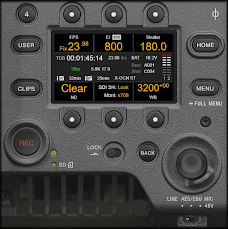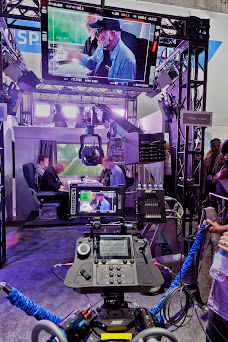 |
BSC John Alcott Memorial Award |
 |
Franz Kraus presents the BSC John Alcott Memorial Award to Milan Krsjljanin |
 |
Seamus McGarvey, ASC BSC presented the Best Cinematography |
 |
Mike Leigh presented the posthumous Lifetime Achievement |
 |
BSC John Alcott Memorial Award |
 |
Franz Kraus presents the BSC John Alcott Memorial Award to Milan Krsjljanin |
 |
Seamus McGarvey, ASC BSC presented the Best Cinematography |
 |
Mike Leigh presented the posthumous Lifetime Achievement |
New EOS C400 Camera Features a 6K Full-Frame, Back-Illuminated CMOS Sensor, With Triple-Base ISO; New CINE-SERVO Lens Compatible with RF Mount Cinema Cameras
MELVILLE, N.Y., June 5, 2024 —Canon U.S.A. Inc., a leader in digital imaging solutions, is pleased to announce the new Canon EOS C400 cinema camera, with a native RF-mount and full-frame, back-illuminated stacked CMOS sensor, designed with the film and live production markets in mind. Canon is also proud to announce the company’s first MOUNT ADAPTER PL-RF, and an RF-mount version of the popular and award-winning CINE-SERVO 17-120mm cinema lens.
“Canon is proud to provide filmmakers and videographers with a variety of tools to capture high-quality and visually stunning images,” said Brian Mahar, senior vice president and general manager, Canon U.S.A., Inc. “The new camera and lens strengthen Canon’s already impressive lineup of cinema products.”
EOS C400 Camera Back-Illuminated Stacked Sensor
For the first time in the cinema EOS system, the Canon EOS C400 camera features a newly developed 6K full-frame, back-illuminated CMOS sensor, with triple-base ISO, allowing the camera to deliver stunning imagery in a wide range of lighting conditions. The base ISOs of 800, 3200, and 12,800 maximize the full dynamic range of the camera.
An additional benefit of the EOS C400 camera’s sensor is the support for the next generation of Canon’s Dual Pixel CMOS Autofocus, Dual Pixel AF II. The back-illuminated stacked positioning offers better light-capturing efficiency, which widens the area of the sensor that can be used for autofocusing. The sensor also empowers faster readout speed, as well as better 4K image quality from 6K oversampling.
EOS C400 Camera Recording Options
The EOS C400 camera records in 6K full frame up to 60p in 12-bit Cinema RAW Light. By changing the sensor mode, the camera can record 4K RAW up to 120fps and 2K RAW up to 180fps. This is all recorded in Canon’s latest iteration of Cinema RAW Light, which provides three different recording modes to choose from depending on your file size preference and workflow.
Other recording options include the Canon-developed, industry standard XF-AVC codec which can be recorded in 10-bit 4:2:2 with oversampling from the 6K sensor, helping to create rich detail and smooth imagery, at frame rates up to 120P, without the need for cropping the image from the sensor. Canon is also introducing two new recording codecs into the EOS C400 camera, XF-AVC S and XF-HEVC S. These formats feature an easy-to-manage naming system and folder structure, while recording in the familiar MP4 format and preserving metadata.
All of these options are recorded to the camera’s CFexpress slot with sub-recording and proxy options available to the SD Card slot, which allows for simultaneous recording even when shooting RAW.
EOS C400 Camera Production Options
For live productions, the EOS C400 camera body features a dedicated 12-pin lens terminal for broadcast and cine-servo lenses, a variety of output and input interfaces including mini-XLR audio inputs, DIN connectors for time code, genlock and return video, 12G-SDI and 3G-SDI monitor outputs, a full-size HDMI output, built-in Wi-Fi connectivity, Ethernet and much more.
The camera also features SRT protocol for IP streaming of video and audio. For shooting scenarios where the camera will be controlled remotely, you can use the Ethernet port or Wi-Fi connectivity to enable remote control, including support for the Canon Multi-Camera Control app, browser remotes, or the Canon RC-IP100 or RC-IP1000 controllers via use of the included XC protocol.
The EOS C400 camera can also provide frame-by-frame metadata in real-time and post-production to support virtual production workflows. Ready for 180-degree VR shooting, the EOS C400 camera has built-in compatibility with the Canon RF5.2mm F2.8 L dual fisheye lens.
CINE-SERVO 17-120mm Cinema Lens
This latest cinema lens from Canon builds upon the legacy of the company’s CINE-SERVO line, with the added benefit of a native RF mount. The additional pins of the RF mount increase communication with RF-mount cameras such as the EOS C400, enabling auto focus, distortion correction and metadata output for virtual productions. The lens comes in either RF or PL mount configurations, with the PL mount version supporting ZEISS eXtended Data and ARIA (Automatic Restoration of Illumination Attenuation)1.
The lens’ new e-Xs V servo drive unit helps to improve its focus and iris speed, enables focus breathing compensation, and includes a USB-C connector for copying drive unit configurations.
PL to RF Mount Adaptor
Canon is also introducing the newly developed MOUNT ADAPTER PL-RF. This adapter opens up a broad range of PL mount lenses to the EOS C400 camera. The adapter maintains compatibility for Cooke i/Technology metadata communication between camera and lens and includes locking plates to help achieve maximum mount strength. To learn more about these new products and Canon’s array of cinema solutions, please visit here.
Pricing and Availability
The Canon Cinema EOS C400 Full-Frame RF Mount Camera is scheduled to be available in September 2024 for an estimated retail price of $7,999.00*. The CINE-SERVO 17-120mm will be available in October 2024 for an estimated retail price of $23,850.00*. The MOUNT ADAPTER PL-RF will be available in September 2024 for an estimated retail price of $1,599.00. * For more information, including accessory prices and availability, please visit here.
The IBE Raptor Macro Cinema Lens Series is a popular choice among filmmakers, offering a versatile selection of macro lenses optimized for digital cinema and large-format film cameras. Available in focal lengths from 50mm to 300mm, these lenses provide magnification capabilities from 1:1 to 2:1, producing stunning detail and organic bokeh effects with an extremely shallow depth of field.
Now, the series expands with new focal lengths for both full-frame (FF) and Super 35 (S35) formats. The 50mm Macro Cine FF lens features a maximum magnification of 1:1 and T-Stop of 2.8, joining the existing set of 60mm, 100mm, 150mm, and 180mm lenses. The new 300mm Macro Cine FF lens offers greater magnification at 2:1 and T-Stop of 5.6.
For S35 sensors, the new 80mm and 120mm Macro Cine lenses have a T-Stop of 2.3 and provide a maximum magnification of 1:1.2. These lenses are ideal for cameras such as ARRI 35 and Phantom.
All lenses offer internal focusing, extended color correction (APO), and robust mechanical design, ensuring reliable performance. Discover the latest additions to the IBE Raptor family for exceptional macro cinematography.
Canon Develops EOS R1 As First Flagship Model for EOS R System
New Image Processing System Further Improves AF and Image Quality
MELVILLE, N.Y., May 15, 2024 - Canon U.S.A., Inc. today announced that its parent company, Canon Inc. announced today that it is currently developing the EOS R1, a full-frame mirrorless camera, as the first flagship model for the EOS R SYSTEM equipped with an RF mount and is aiming for a 2024 release.
The EOS R1 is a mirrorless camera geared toward professionals that brings together Canon's cutting-edge technology and combines top-class performance with the strong durability and high reliability sought in a flagship model. This camera will dramatically improve1 the performance of both still images and video and meet the high requirements of professionals on the frontlines of a wide range of fields including sports, news reporting, and video production.
This camera employs the newly developed image processor DIGIC Accelerator in addition to the pre-existing processor DIGIC X. The new image processing system, composed of these processors and a new CMOS sensor, enables large volumes of data to be processed at high speeds and delivers never-before-seen advancements in Auto Focus (AF) and other functions.
By combining the new image processing system and deep learning technology to an advanced degree, Canon has achieved high-speed and high-accuracy subject recognition. For example, subject tracking accuracy has been improved so that in team sporting events where multiple subjects intersect, the target subject can continually be tracked even if another player passes directly in front of them.
In addition, the AF "Action Priority" function recognizes subject movement by rapidly analyzing the subject's status. In moments during a sports game when it is difficult to predict what will happen next, this function automatically determines the player performing a certain action, such as shooting a ball, as the main subject and instantly shifts the AF frame, thereby helping to capture decisive moments of gameplay.
The combination of the new image processing system and deep learning technology will help to improve image quality. Canon implements the image noise reduction function, which has been previously developed and improved as part of the software for PCs, as a camera function to further improve image quality and contribute to user creativity.
Canon is working on field tests for this camera and will support capturing definitive and impactful moments at international sporting events to be held in the future.
Going forward, Canon will continue to expand the EOS R SYSTEM lineup of fascinating cameras and RF lenses, thereby continuing to meet the demands of a wide range of users and contribute to the development of photography and video culture.
For more information, visit Canon USA
Fujifilm has added a second lens to FUJINON DuvoTM Series.
DuvoTM 24-300mm optimizes professional broadcast and cinema workflows.
After many years of delivering quality lens options for the broadcast and cinema industries, Fujifilm launched a new lineup – FUJINON DuvoTM Series – with DuvoTM HZK25-1000mmF2.8-F5.0 PL Mount Cinema Box Lens. Now, a second lens has been introduced to expand the range. FUJINON DuvoTM HZK24-300mm Portable PL Mount Zoom Lens combines the best of both production spheres, bringing a cinematic touch to broadcast operability.
Key features and specifications below.
DuvoTM 24-300mm Zoom Coverage
The new lens offers extensive coverage, with 12.5x zoom across 24-300mm as standard. This can be extended by utilizing a built-in expander, which shifts focal length by 1.5x. The result is an even greater 36-450mm range.
Fujinon Lenses National Sales Manager, Stosh Durbacz, explains more: “It gives handheld positions within a show the opportunity to take advantage of that classic Fujinon cinema look, developed over our 80 years of heritage. It brings you closer to the show.”
DuvoTM 24-300mm Size
Ideal for shoulder-mounted operation and compatible with stabilizing support systems, DuvoTM 24-300mm is just 270.5mm long and 2.95kg in weight. Portability and ease of use are assured for teams of all sizes, in varied locations within the live environment. Coupled with the range of coverage, operators can seize opportunities near and far, even from limited physical spaces. “The combination of portability with the long focal length gives you that all-encompassing result,” adds Stosh.
DuvoTM 24-300mm Sensor Coverage and Quality
While broadcast cameras have traditionally contained smaller sensors, many creatives are now looking to larger formats to deliver a cinematic aesthetic. DuvoTM 24-300mm offers native Super 35mm sensor coverage, but sensors equivalent to full-frame can be covered via the built-in expander. This function expands the lens’s image circle by 1.5x, maintaining the same optical quality and angle of view.
The optical quality in question is a result of large-diameter aspherical elements and Super ED (extra-low dispersion) lenses within DuvoTM 24-300mm. Ghosting, lens flare, and various forms of aberration are effectively controlled. “It’s bringing Fujinon’s color space, latitude, and shallow depth-of-field to live shows,” Stosh continues.
DuvoTM 24-300mm Accessories and Control
Comfortable usability is a must in the fast-moving live environment. Zoom, aperture, and focus can all be controlled via third-party wireless controllers, enabling remote operation and dedicated focus pulling by an assistant. Alternatively, focus alone can be adjusted using one of many industry-standard accessories thanks to the lens’s 0.8M focus ring gear pitch.
A Remote Back Focus function is another of DuvoTM 24-300mm’s operability benefits. Using the camera’s control panel or associated robotic support system, flange focal distance can be adjusted accurately. This facilitates use of an external monitor, rather than the camera’s viewfinder, when back focusing is required.
For seamless use through post-production DuvoTM 24-300mm is equipped with the ZEISS eXtended Data system, which outputs a metadata log of zoom, aperture, and focus positions, as well as distortion and shading corrections.
FUJINON DuvoTM HZK24-300mm Portable PL Mount Zoom Lens is expected to be available in the U.S. from spring 2024. Learn more
FUJINON HZK25-1000mm F2.8-F5.0 PL Mount Box Lens ("HZK25-1000") features a native PL mount, offering a beautiful bokeh that brings a cinematic look to live production. This lens achieves a long telephoto focal length of 1000mm (1500 with 1.5 Expander), the highest combination of magnification and telephoto reach available to date for large cinema sensors. A Dual Format Expander also allows the lens to maintain image quality in both S35 and Large Format. HZK25-1000 features all of the latest technological advancements that are now standard in most of Fujifilm’s FUJINON broadcast lenses including stabilization, Automatic Restoration of Illumination Attenuation (ARIA), Remote Back Focus (RBF), and Automatic Chromatic Aberration Correction (ALAC).
HZK25-1000mm
Focal Length:
[1x] 25-1000;
[1.5x] 37.5-1500
Maximum F Stop:
[F2.8] 25-465mm ;
[F5.0] 1000mm
Number of Iris Blades: 9
A Hollywood legend, the director, screenwriter and producer George Lucas will receive the Honorary Palme d'or on Saturday, May 25, at the Closing Ceremony of the 77th Festival de Cannes, to be broadcast live on French TV channel France 2. At the mere mention of his name, a whole section of the Seventh Art lights up, and you can hear a few unforgettable music notes (by John Williams!). Inseparable from the Star Wars and Indiana Jones sagas, George Lucas has forever given the blockbusters an illustrious history, and audiences the world over unrivaled pleasure.
George Lucas' debut in the film industry was marked by his close collaboration with Francis Ford Coppola, who helped him produce THX 1138 (1971), adapted from one of his experimental short films made at the University of Southern California. From his very first feature, George Lucas staged the themes that are dear to him: science fiction to denounce a society of surveillance, using love to fight fate and conformity, and reversing moral values to challenge the role of good and evil.
With American Graffiti, an ode to American youth, George Lucas revealed Harrison Ford and directed his first major success which enabled him to embark on his ambitious saga.
A visionary intergalactic odyssey that reinvented the codes of cinematic genres as part of the New Hollywood movement, Star Wars is nothing short of mythology, a study that has fascinated George Lucas since his university days, in the construction of characters and plots and the breadth of its cultural reach. Like Tolkien in literature, he imagined a universe, with its geography, populations, languages, moral values and even its vehicles. This exceptional ambition, which initially frightened 20th Century Fox's producers and led to a grueling post-production period, was nonetheless the recipe for unprecedented success: the film captivated the American crowds and became a worldwide socio-cultural phenomenon, which continues to this day.
The Honorary Palme d'or will be presented to him on stage at the Grand Théâtre Lumière during the Closing Ceremony on Saturday May 25, 2024.
The Festival de Cannes is delighted to pay tribute to one of the greatest figures of contemporary cinema, a man with an extraordinary career, who brings together great entertainment and innovation, mythology and modernity and cinephilia and technology.
The Closing Ceremony of the 77th Festival de Cannes will be broadcast live on France Télévisions and Brut. on Saturday, May 25. Camille Cottin will serve as Master of Ceremony.
A Short Story about Director's Viewfinders. (Original posted August 2009) In the beginning, capturing the vision that movie directo...

FUJIFILM DUVO HZK 14-100 PORTABLE ZOOM LENS IS A DOUBLE WINNER NABSHOW PRODUCT OF THE YEAR.

The Duvo HZK 14-100mm Portable Zoom Lens from Fujinon is a compact and lightweight, dual-format, PL-mount zoom lens that can cover both Super35 and full-frame sensors.
Boasting a maximum aperture of T2.9, when paired with select cinema-type sensors, this lens covers a widely used 14-100mm range and delivers desirable results with shallow depth-of-field and attractive bokeh. A built-in extender expands the image circle by 1.5x, shifting the focal length to 21-150mm.
The lens design allows its operation to be in line with that of broadcast lenses using zoom and focus demands, and at only 6.5 lb, the Duvo HZK 14-100mm is built for portability.
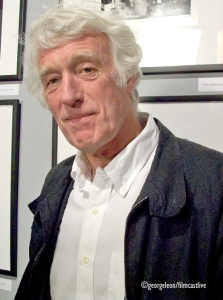
1. Don’t Get Distracted with Technique
“Operating the wheels needs to become second nature as it can be a disaster if the technique of operating distracts from the relationship that an operator has with the subject. When I was starting I practiced doing figures of eight with the wheels and progressed to signing my name with them.
I don’t feel the need to practice anymore but I do reassure myself that I can still sign my name each time I start a new film, if I am using a gear head. A gear head is not everyone’s choice and I don’t always carry one but it does have distinct advantages on certain set ups and on certain films.”
👉 CLICK IMAGE ABOVE FOR MORE
From Executive Producers Martin Scorsese & Thelma Schoonmaker

🇬🇧 MADE IN ENGLAND: THE FILMS OF POWELL AND PRESSBURGER
Martin Scorsese's personal journey through the films of Powell and Pressburger, the visionary British filmmakers behind classics like The Red Shoes and Black Narcissus, offers a captivating exploration of their genius and enduring influence on cinema.
Directed by David Hinton, Narrated by Martin Scorsese
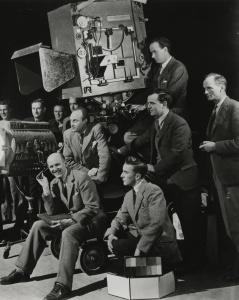
Click image above to download PDF booklet

The Camera Assistant's Manual. 7th Edition.
ON SALE NOW! CLICK IMAGE ABOVE TO ORDER.
Excel as a Cameraman in today’s evolving film industry with this updated classic. Learn what to do – and what NOT to do – during production and get the job done right the first time.
This seventh edition covers the basics of cinematography and provides you with the multi-skill set needed to maintain and transport a camera, troubleshoot common problems on location, prepare for job interviews, and work with both film and digital technologies.
Illustrations, checklists, and tables accompany each chapter and highlight the daily workflow of an Assistant Cameraman (AC), with expanded sections on problems and troubleshooting, updated formulas, tables, and checklists, as well as new information on the differences between working in the United States and UK and additional information on working with digital technology.
This is a must-have for anyone looking to succeed in this highly technical and ever-changing profession. This book features a comprehensive companion web site that offers plenty of useful resources, including online tutorials that ACs can easily access while on location and supplementary downloadable forms and checklists.

The ICG Safety App update went live on Monday, April 8, 2024.
The updated app features a redesigned user experience, improved Hazard Report workflow, and much more. On April 8, the existing ICG Safety App should have automatically updated to the new version of the app, depending on your phone's settings. If automatic app updates are not turned on, you will need to manually update the app. For more information on updating apps, please refer to either the Apple or Android documents.
Submitting Through the App
Select the orange "Report Hazard or Unsafe Hours" button on the app to report your workplace safety issues. All submissions will be handled confidentially. Members from other Locals are also invited to submit a report (please include your Local in the comments section).
CLICK IMAGE TO DOWNLOAD APP


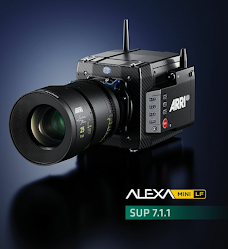
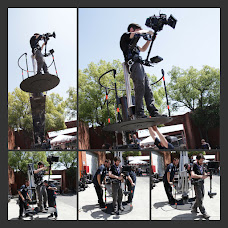

SkyPanel X—the new all-weather LED luminaire and latest addition to the SkyPanel family. Introduced as a modular system and configurable into different sizes, SkyPanel X now offers native soft, native hard, and open-face lighting.
This state-of-the-art LED light sets new standards in terms of dimming, color rendition, output, and beam quality, making it the perfect lighting solution.







AC MANUAL, 11th EDITION

The revised 11th edition of this essential technical reference is now exclusively available for pre-order from the American Society of Cinematographers.
Containing entirely new chapters and substantial rewrites of entries from the previous edition, this hardback book designed for on-set use is a must-have for cinematographers and other motion-imaging professionals.
Topics covered in this new edition of our “Filmmaker’s Bible” include:


The MYCOLOR app provides easy access to Rosco’s color filters. Use the app to search, filter, sort, compare, and favorite all of Rosco’s color filters on your mobile device.
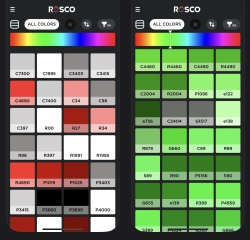
The app features all Rosco filter ranges:
The free app also features a palette builder for users to create a collection of color filters for their projects or productions.
MYCOLOR is available for iOS and Android devices. Download by clicking image.

